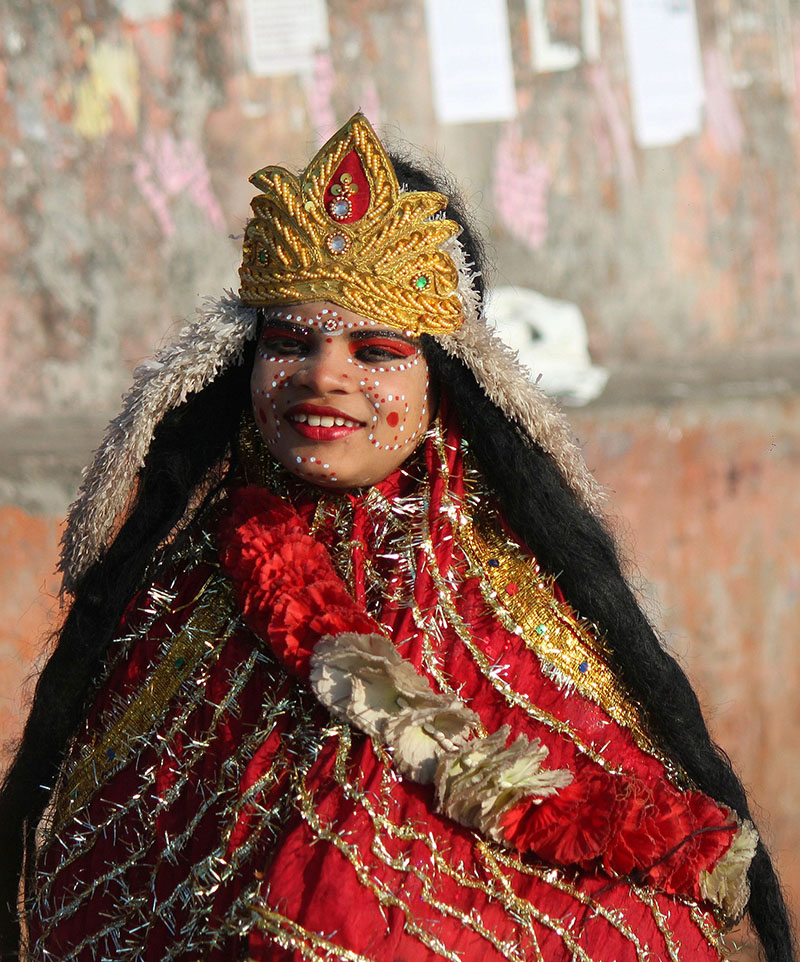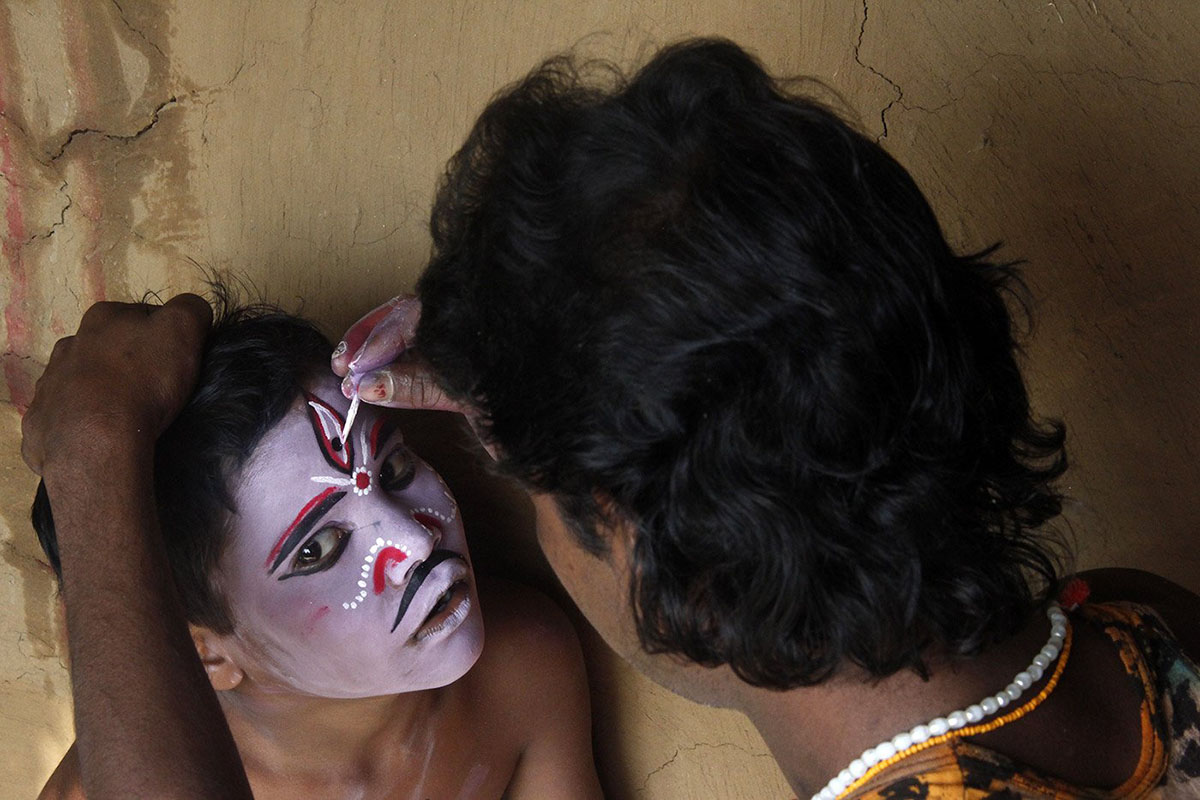Itinerant folk artists specialising in impersonation and known for their quick transformations into different characters, Bahurupis are found in parts of India, Bangladesh and Nepal. The name “bahurupi” is derived from the Sanskrit words bahu, meaning “many”, and rupa, meaning “form” or “personality”.
Scholars have identified references to wandering mimics in Buddhist Jataka literature dating to as early as the fourth century BCE. Mentions are also found in Charyapada Vajrayana verses from the twelfth and fourteenth centuries CE, as well as in the Mughal historian Abu’l Fazl’s Ain-i-Akbari, composed in the sixteenth century. These individuals were not the same as present-day Bahurupis, but may have drawn on a similar performance tradition.
Bahurupis today are most commonly men from socially-disadvantaged groups such as the Bediya community. The Bediyas were traditionally hunter-gatherers in the forests near the Mayurakshi river in present-day Jharkhand and West Bengal. Following the enactment of forest laws by the British Raj in 1927, the community gradually sought alternate means of livelihood. According to the community’s oral histories, a Bediya man working as a guard was inspired by an actor’s performance, and taught the art to other Bediyas. It was then adopted by the community as a source of livelihood.
Many Bahurupis today began performing as children, and travel from village to village, performing popular tales and receiving food, money, or gifts from villagers. They perform solo, usually in open public spaces, on occasions such as Charak, Holi and Ram Navami. Bahurupis are also sometimes invited to entertain audiences during ceremonies or as part of village fairs. The characters and narratives that Bahurupis depict are derived from epics such as the Ramayana and the Mahabharata, Puranic literature or romances such as Laila Majnun. While in costume, they narrate the story being depicted, often using dance and music in their performances to enhance the dramatic effect. As the performance progresses, the Bahurupi transforms into multiple characters through sleight of hand and quick costume changes. They do not follow a written script, usually improvising much of the narration.








